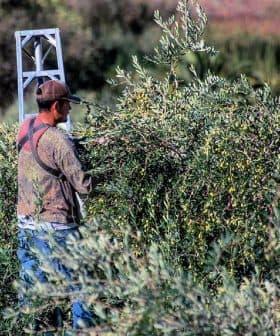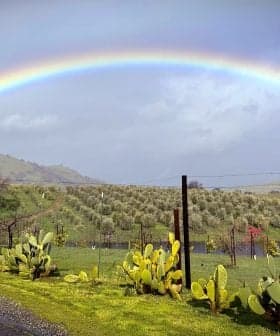The Mystique of California Terroir
California’s diverse geography and climate, along with a community of growers committed to best practices, contribute to the unique terroir that allows for the abundant production of flavorful olive oils. With over 150 varieties of olives grown in the state, California’s olive oils are described as fresh and flavorful, with some growers believing they are superior to those produced elsewhere due to the abundance of water in the region.
California is the home of majestic redwoods, Napa Valley wines, gold nuggets and vast orchards of almonds, apricots and avocados. What is it about the California terroir, the environmental conditions, that makes all this possible as well as being ideal for growing olives?
It’s the physical geography and climate of the land, to be sure, but more than that it’s the community of growers and their interaction with the soil, the water, and the trees. And, it’s the strength that comes from diversity in both the terrain and the people that forges the unique California terroir.
Olive growing land in California is abundant. The great Central Valley with its rich alluvial soils, the Sierra foothills and the moist coastal regions all produce flavorful olive oils despite their diverse topographies and hundreds of micro-climates. What they have in common is an underlying Mediterranean climate of hot summers and mild winters that is ideal for olives.
The community of growers is as varied as the geography. Growers range from small artisan operations using traditional methods to large companies employing super high density techniques. What they share, however, is a commitment to best practices, including keeping the fruit clean, using proper irrigation and getting the olives to the mill quickly.
It makes sense that the diverse terrain would result in diverse varieties and that proves to be the case. According to a California Olive Oil Council report, there are over 150 varieties of olives grown in the state.
Not only does the terrain allow for assorted varieties, but grower preferences also play a role. Dan Flynn, Director of the UC Davis Olive Center says that, unlike other countries, there is not a huge tradition to plant certain varieties and growers don’t feel that they have to stick to one variety.
All this diversity means that there is no single California flavor profile. Even so, are California olives distinguishable from those produced elsewhere? It depends on who you ask. Sam Cabral, a small grower from Glenn County is convinced that California olives are better. “It’s the water. We have lots of water here and it makes the meat of the olive bigger and more flavorful.”
Dan Flynn says that California olives are fresher than elsewhere because they’re local (to U.S. consumers) and they would meet international standards for EVOO, unlike some supermarket olive oils from other places. A California olive oil has a “fresh aroma, and fresh flavor. It tastes like it just came out of the orchard,” says Flynn.
Executive Director Patty Darragh of the California Olive Oil Council says that if she were comparing fresh California olives to fresh European ones, she’d “be hard-pressed to tell the difference.”
However they are described, it just might be the mystique of the terroir that makes California olive oils so special.






